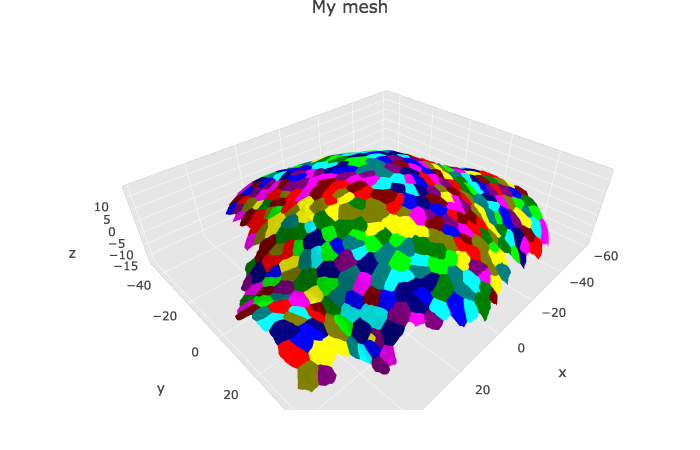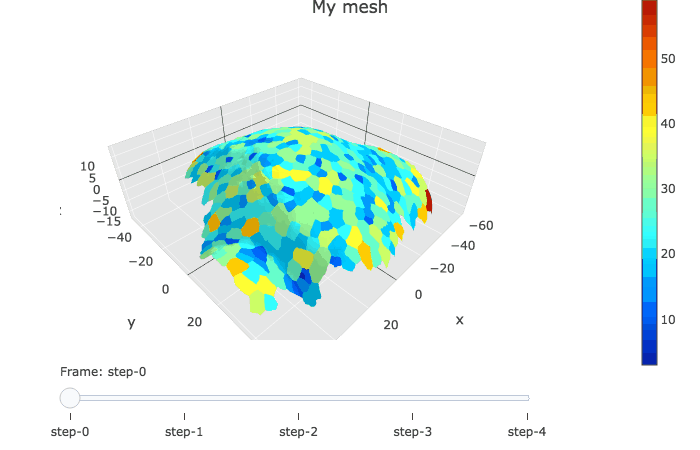The goal of {cellviz3d} is to propose visualisation of meshes created from the segmentation of 3D/4D microscopic images, and point clouds. In particular, it helps visualising meshes from MorphographX, in combination with {mgx2r}, or point clouds from the MaMuT Fiji plugin, in combination with {mamut2r}.
To cite {cellviz3d}, call the R built-in command citation("cellviz3d").
Marion Louveaux. (2018, October 19). cellviz3d: a R package for the 3D and 4D interactive visualization of cells and biological tissues (Version v0.0.2). Zenodo. http://doi.org/10.5281/zenodo.1467416
You can install the released version of {cellviz3d} from Github with:
# install.packages("devtools")
devtools::install_github("marionlouveaux/cellviz3d")
# With vignettes
devtools::install_github("marionlouveaux/cellviz3d", build_vignettes = TRUE)See full documentation created with {pkgdown} at https://marionlouveaux.github.io/cellviz3d/
A vignette is available in the package if you built it during installation with build_vignettes = TRUE:
vignette("cellviz3d-mgx_meshes", package = "cellviz3d"): how to build 3d interactive plots of meshes as issued from {mgx2r}
The data in the example below were created with the package {mgx2r}, on the example dataset of {mgx2r}. This dataset is a timelapse recording of the development of a shoot apical meristem of the plant expressing a membrane marker. I took one 3D stack every 12h and have 5 timepoints in total. To know more about the example dataset of {mgx2r}, see help.search("mgx2r-package").
library(cellviz3d)
library(plotly)# Read data
myMesh <- readRDS(system.file("extdata",
"mgx/mesh_meristem_full_T0.rds",
package = "cellviz3d"))
myCellGraph <- readRDS(system.file("extdata",
"mgx/cellGraph_meristem_full_T0.rds",
package = "cellviz3d"))plotlyMesh() creates a plotly graph of type mesh 3D, with custom colors and custom hover information for a single mesh. Below, the mesh is displayed with one color and one cell label per biological cell. Cell label is visible when hovering over the cell center.
meshCellcenter <- myCellGraph$vertices[,c("label","x", "y", "z")]
plotlyMesh(meshExample = myMesh,
meshColors = myMesh$allColors$Col_label,
meshCellcenter = meshCellcenter) %>%
layout(scene = list(aspectmode = "data"))For more examples, see the vignette of {cellviz3d} and {mgx2r}.
Many thanks to [@friep](https://github.com/friep) for her help on the plotlySpots_all() function.
Please note that this project is released with a Contributor Code of Conduct. By participating in this project you agree to abide by its terms.

